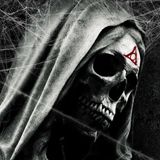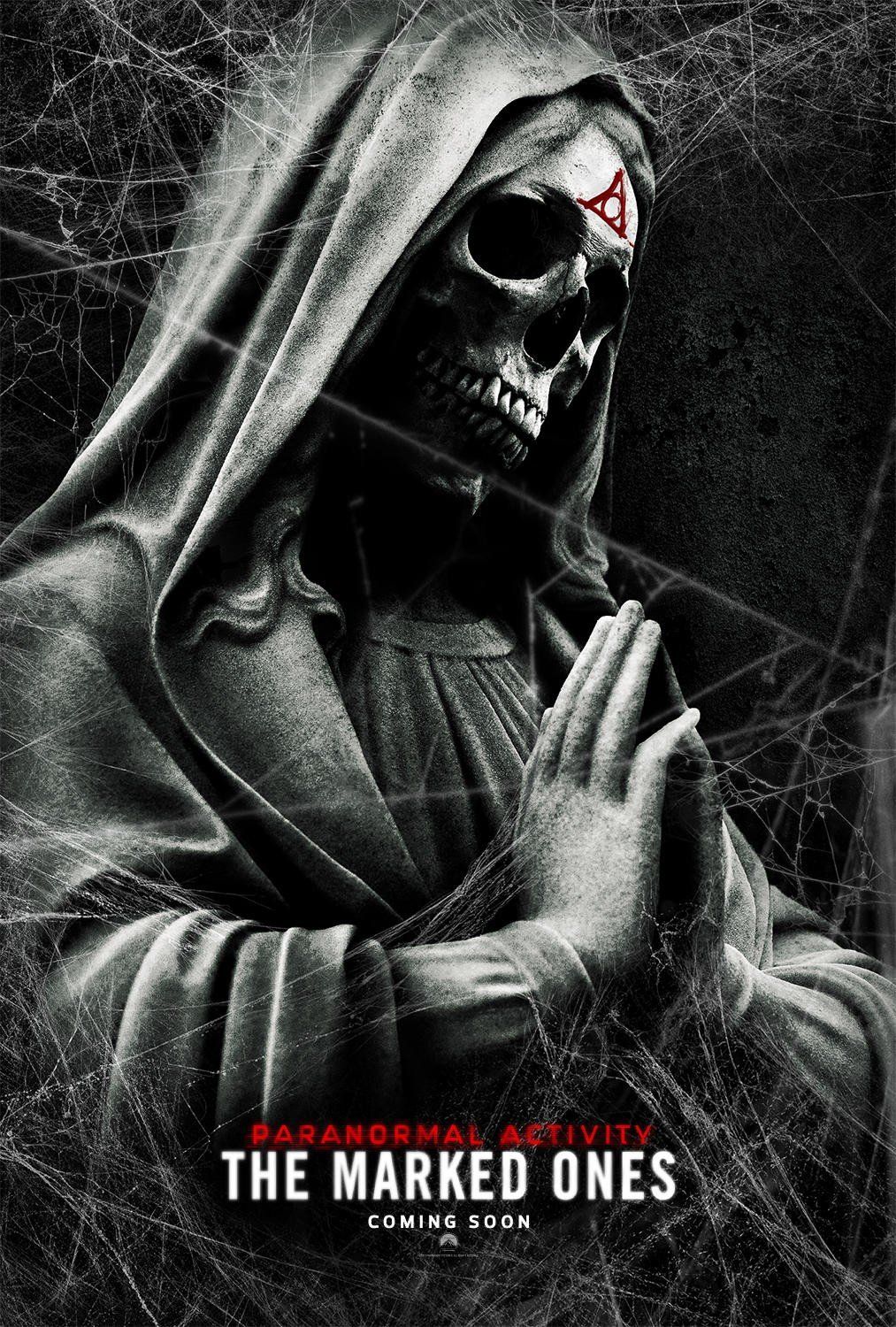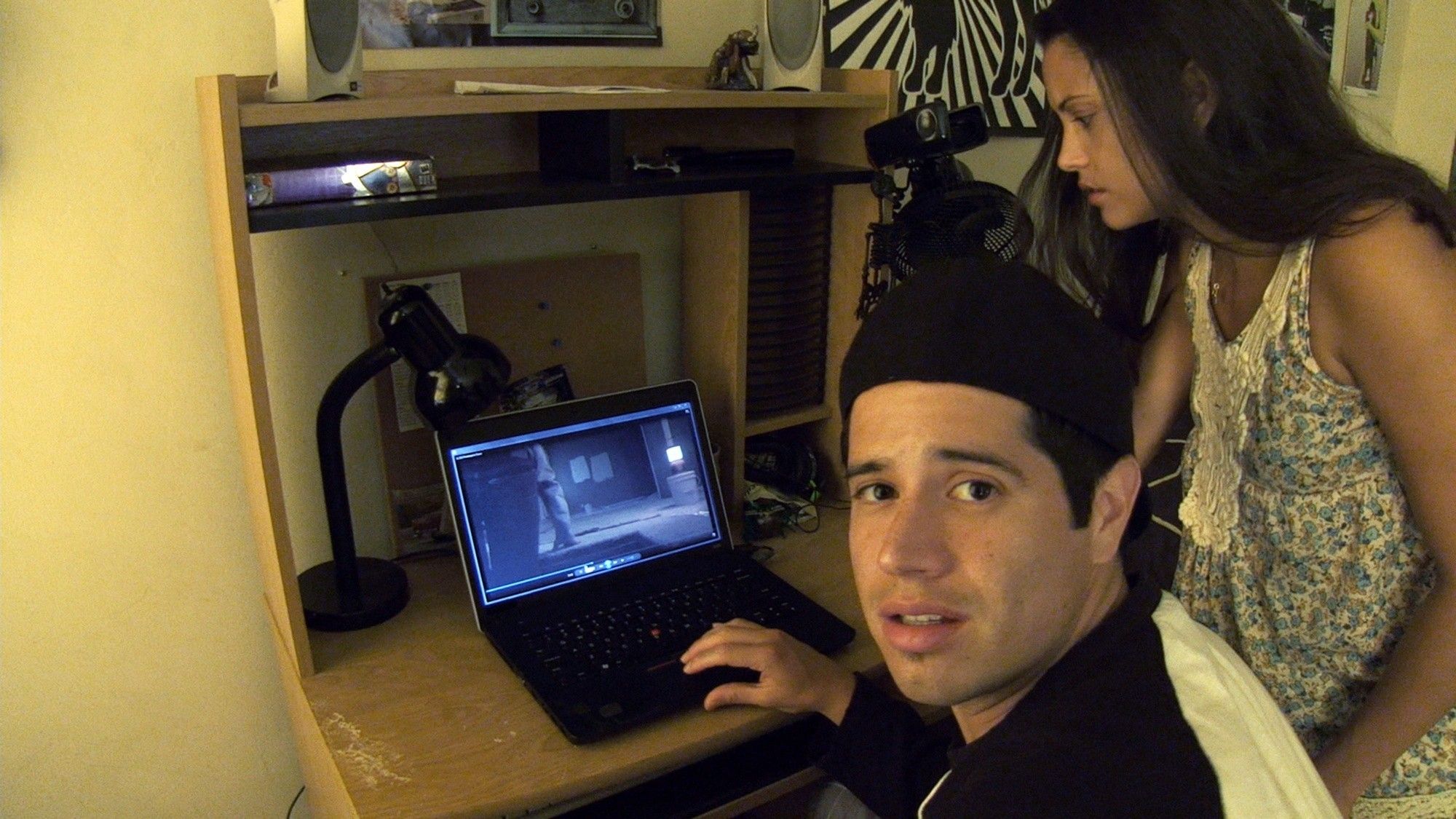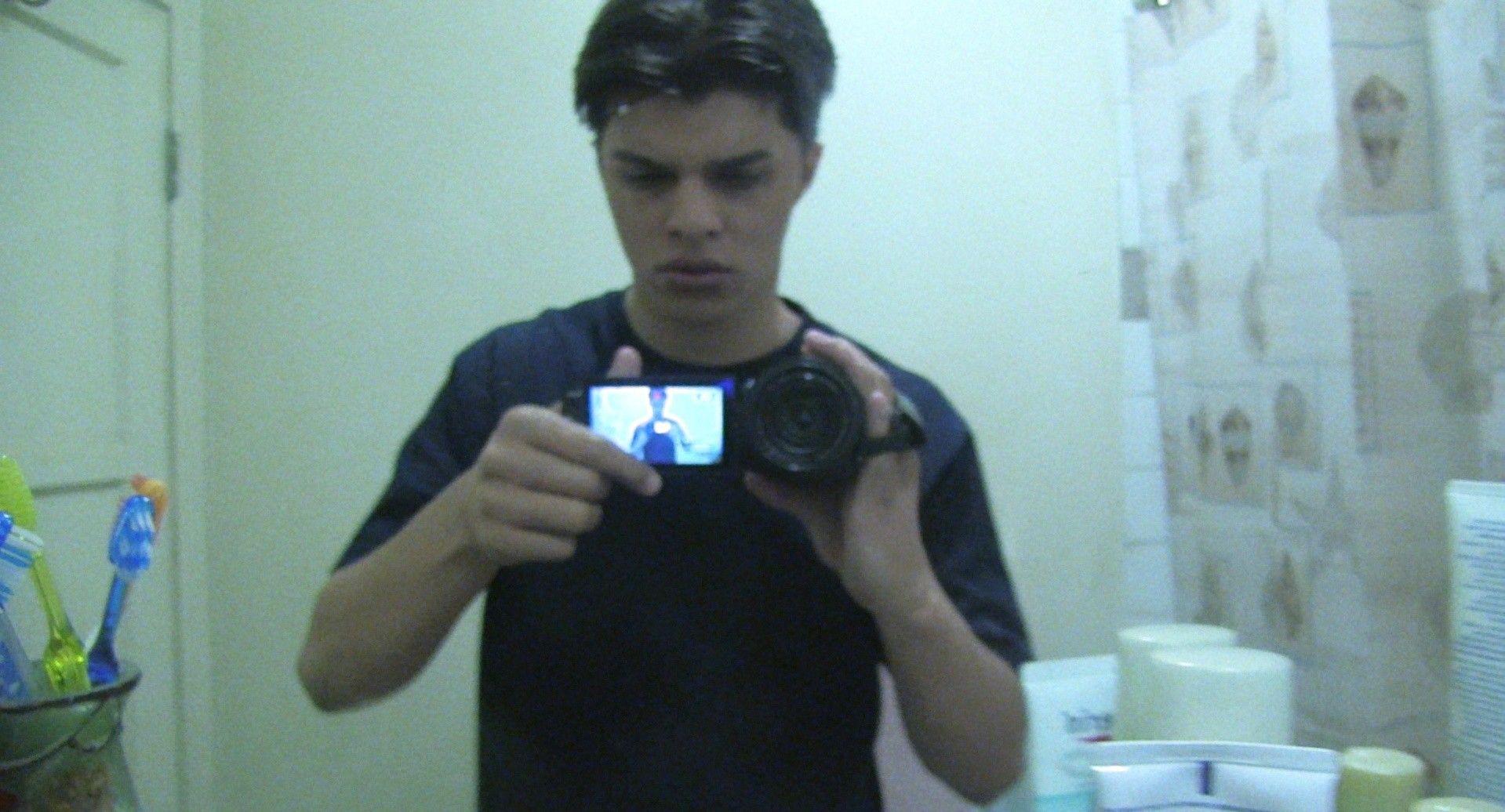The Paranormal Activity film series has become such a cultural phenomenon, and so effectively sold as “real,” that it’s easy to forget there are people behind the scenes cobbling together these thrillers. But Christopher Landon is one of the few who’s been with the franchise since the beginning, writing part or all of every installment to ensure the mythology evolves naturally – and when it veers off-track, he helps to steer it back in the right direction.
After contributing to Paranormal Activity 4 as a sort of overseer, trying to ensure that film’s unwieldy story didn’t betray the ideas of its predecessors too much, Landon wrote and directed The Marked Ones, a film intended as a spinoff but one that he hopes will actually restore balance and clarity to the franchise.
On the Monday after The Marked Ones opened nationwide, Landon sat down with Spinoff Online to talk about the process of making the film and, in particular, getting the series “back on track.” Additionally, he revealed some of the machinery that enables him and the other filmmakers to churn out new movies so quickly and effectively, and talked about how the series will expand as it advances toward a grand, and hopefully terrifying, finale.
Spinoff Online: Paranormal 4 sort of complicated the mythology by introducing ideas that didn’t tie directly into what happened in the loop of the first three; The Marked Ones connects some of those ideas together. Did you know in advance you would be doing that when you started working on this film?
Christopher Landon: Even before we started getting into the nuts and bolts of developing the story for this one, I knew that we had to get back on track, from a mythology standpoint. Because when 4 came out, and even before 4 came out, on a kind of gut level we knew that we’d lost our way. It was a really complicated situation, because I was off, about to go make The Marked Ones while they were getting ready to go shoot 4. I wasn’t supposed to be involved with 4, and then at the last minute they were like, “Uhhh?” So when we went into this, we knew the objective was we were making a spinoff, but we knew we were going to be perceived as making a sequel of sorts, because that was inevitable. So we wanted to make sure that we got our mythology back on track, but that we also presented something and really gave the fans a movie that felt fresh and different – but still had the same DNA.
Review: Cliched Paranormal Activity: The Mindless Ones Still Delivers Scares
Those were the big objectives and the big challenges that we were facing, and then I had my own sort of goals that I had set for myself, stylistically how I wanted it to feel, the pacing, how we were going to end the story, what types of characters we were going to be around. Because even though the thing I think everyone perceived as the big difference was, “Oh, it’s a Latino cast,” for me that was really the most minor part of it. For me, the big sell and the big changes were that we’re doing a possession story, not a haunted house story, and also that narratively and tone-wise it was very different from all of the other movies too. The way this movie plays out is that the first act is really a comedy, and it plays like one, the first half of the second act plays almost like a comic-book origin story, and then the second half of the second act becomes like a suspense-possession story, and then the third act is a full-blown horror film. So we take this weird, interesting journey in this movie that I haven’t personally seen in a lot of other horror movies, so that was my goal.
Given that there were multiple endings and lots of outtakes from earlier films, how much reverse engineering have you had to do with each installment to maintain some semblance of a coherent mythology?
You know, it depends on the movie. There’s always an element of reverse engineering here, and we approach it knowing that every time, because we know that we have the flexibility and the freedom to do that – because it’s very inexpensive, and its usually one location, so it’s easy for us to return to that one place. But it’s varying degrees – I would say less so on 3, but much more so on 4, and very, very little reverse engineering on The Marked Ones. But it is fun to kind of go back and know where you need to plug things in to advance the story. Or sometimes, we’re like, we’re almost there – we just need one more scare or one more thing that feels like it’s pushing that bit along. There was that scene in The Marked Ones where Irma has called Hector over to the apartment because Jesse’s been acting strange in his room, and he finds Jesse has pushed Taco [his dog] up onto the ceiling – and that was a total last-minute moment that I thought of. Because I thought I was missing a moment that showed a.), his power, and b.), his detachment from something he loved. I have a dog, and I just was like, what a terrible, strange image to have to happen, so we ran back in and grabbed that pretty quick. So it’s stuff like that you get to do. But that’s the weird thing about found footage – you have to be specific enough to where the audience is following a clear narrative, but you have to be vague as well. You have to keep it out there in this weird space so that it’s not too on the nose. And so it’s really hard to strike that balance sometimes.
In terms of the stylistic ambitions you had with this film, it doesn’t utilize the regimented pacing and the tableau-like static shots that were hallmarks of the others. What prompted those decisions, since they really distinguish this series from its competitors?
For me, it was because I knew we were trying to make a spinoff, we couldn’t tie it stylistically to the other films that way – and for me personally, that was another reason 4 had issues. I felt like we had outstayed our welcome in that regard, and I think it started to feel a little stale and a little dusty. And the Night 1, Night 2, which was incredibly effective, especially in 2 and 3, there was a rhythm to those movies where when we made them, we would actually graph it, so they start out with really long days and short nights, and then as the movie advances, the nights get longer and the days get shorter until you’re just in night, night, night. So for this movie, I was inspired by the most random thing, which was Downton Abbey, because they take this old, dusty, downstairs-upstairs format and they made it feel contemporary because the pacing was so fast – there was this clip to it. So when I started to write this and think about this, I knew I wanted this movie to move fast, and to not go into those lulls – and part of that stylistically was to not rely on the giant, static wide shot. And I honestly feel like after we did the fan-cam, I felt like that was sort of like the pinnacle of the cool thing that you could do with that type of a shot, and I didn’t want to bite our own style. I think that’s a big misstep for a lot of franchises, that they start to cannibalize themselves, so for me it was about, let’s try something different – let’s kind of abandon the old stuff but still stay true to the DNA of what we’ve done before that feels right.
How tough is it to come up with a sort of iconic set piece or device for each film – the fan cam, even the Wii scanner in 4?
I actually think we could have done more with that – I don’t think it reached its potential. Because that was something that the directors found on YouTube, that you could see all of these dots in infrared – we were all like, “Holy shit! That’s visually really arresting.” I think that we all try to find like the cool moment, to some degree – at least before, that’s what we did. In 2, we had the kitchen when the cupboards blew open, and we did the big drag down the stairs from the nursery, and in 3, the memorable things were the fan cam and the kitchen drop. So we were always trying to find that thing, but when I wrote this movie, I actually wasn’t trying to find that thing. I really wanted it to just focus on the characters and the story and the mythology, and those were the things that I stayed centered on, and when we found set pieces or moments, we went for that too. There’s the Simon in this one, which is how I kind of wanted to reinvent the Ouija board scene, but I liked that our characters aren’t pursuing that type of communication, but they happen into it by accident, and then realize they can actually talk to this thing through this weird old game. I had originally written it as a Speak ‘N Spell, but then it felt too explicit, and so a Simon, which you could only get a “yes” or “no” out of, worked better for the story. That I think is one of the things that is very true to the franchise, which is we take common household items and turn them into sort of creepy things. It’s like we did that in 2 with a fucking pool cleaner, which is sort of weird, but I think that’s what makes it feel original and more real – that it is so arbitrary.
Do you have different echelons for the gags that you come up with?
We have terms for all of it, our own sort of specific vernacular for all of it. We call jump scares jump scares, when things happen suddenly and they’re big and loud and come out of nowhere, and then we have “creepers,” which are like the slow-burn moments that we’ve had. We have all of these random terms, too, like the actors have to be camera operators as well, and they have to learn to act with the camera. So we’ll tell the actor, especially if they’re moving quickly or running, that we have “degrees of Robocop,” so that’s how much they steady the camera while they’re moving so we don’t make the audience vomit right away. And it’s still a thing with handheld that’s hard – some people have a stomach for it, but that’s the thing that’s really tough, because, say, in the scene with the naked woman, we really did put a GoPro on a rope and that’s how we shot the scene, so it was difficult to keep steady. But it’s the nature of handheld and especially the nature of found footage. But the size of the set pieces, we know there’s a couple of “hero” ones that we want – in this case, the scene where Oscar jumps from the church tower was one of our bigger ones. And we knew that was another thing we wanted to do in this one, because we had the flexibility to be outside – we wanted to try a couple of bigger-looking gags, but still make sure they were tied to the story.
What’s the toughest ongoing thing to justify in these stories?
Holding the camera! (laughs)
I feel like at this point audiences have sort of accepted that people are filming, regardless of the circumstances. But more often, it seems like filmmakers forget that characters are usually not looking at the world through the camera – they have peripheral vision to see someone standing behind or beside them.
Here’s what I always say: It’s like a magic trick, a sleight of hand. In a found-footage movie, the most critical act is the first act, and even more so the first 10 minutes, because that’s when you are seducing the audience into believing this is a real person who has a real reason to be holding the camera, and if you get that right, eventually you get to a point in the third act where you are no longer a found-footage movie – you’re a real movie. But if you’ve done the job right, the audience has forgotten that. They don’t see the transition – it’s like a handoff. And so I don’t think that we’re experiencing the movie at that point as a found-footage movie. We’re experiencing it as a traditional movie that has a first-person POV. Because anyone knows if it were real and you were in that situation, you would use the camera as a weapon – you would throw it at whatever was chasing you and you would run, so you’re pretty much a dumb asshole for holding it the entire time.
But we’re a movie, and we hope that the audience has surrendered to the characters and the story at that point, and they’re no longer thinking about it.
There’s a great finale to this film that feeds really effectively back into the earlier films. But does the combination of this possession story and the hauntings in the other movies mean that future installments will broaden the mythology further?
Yeah. I think we’ve introduced two really big, important elements, one being that this is something that’s happening everywhere and there’s a larger game at play – the coven actually has a plan they’re attempting to create and army for a much bigger purpose, which is the big idea that we were working toward. And that they have the ability to create these really fucked-up portals that aren’t meant to be time machines, but they take you to specific events and moments that have great importance and meaning within the context of our franchise. So that’s kind of stuff that was a combination of being able to come full circle and part of what I also wanted to do in this movie, which was reference all of the movies, not just one of them. For me, it was really important to end the movie where it all started, in the most important moment in the first movie that you never got to see, but also teeing up what’s coming in 5, even though it’s not my movie. I know that’s stuff they’re going to expand on.
You mean 6?
Well, we’re not really 5 – we’re the spinoff. So they’re actually calling that one Paranormal 5. So it was also just to start to hand it over to the next one.
Are you writing that?
No. I’m not involved. That’s not to say I won’t be involved in the other movies at some point – and we’re talking about a sequel to this one. But I’m about to go direct a movie called Scouts vs. Zombies for Paramount, so that’s what’s next for me.
Paranormal Activity: The Marked Ones is in theaters now.




